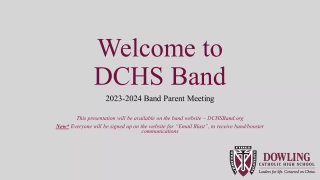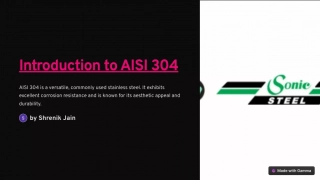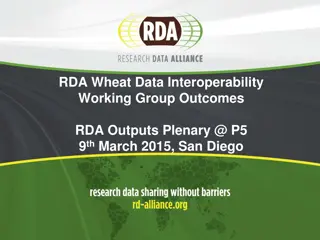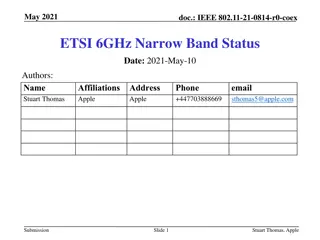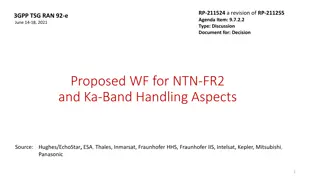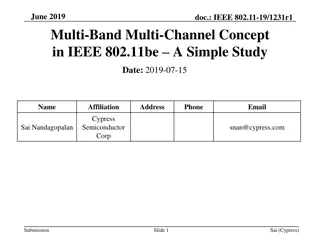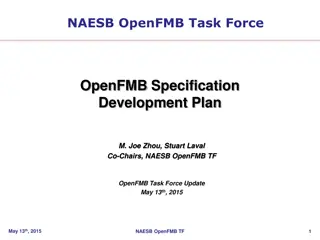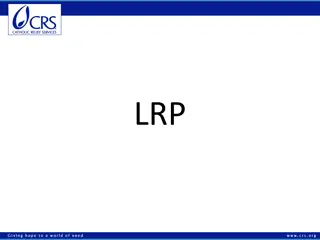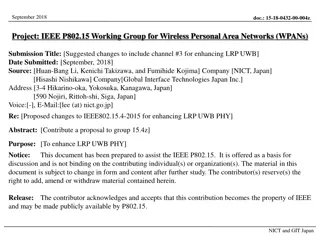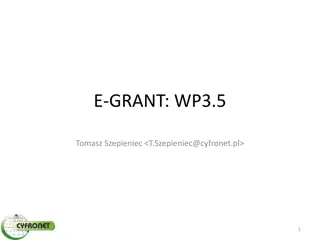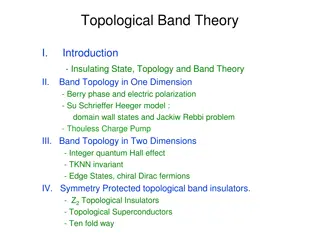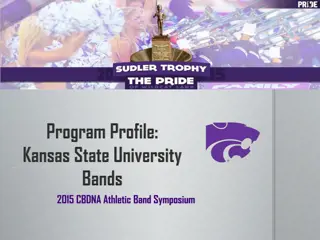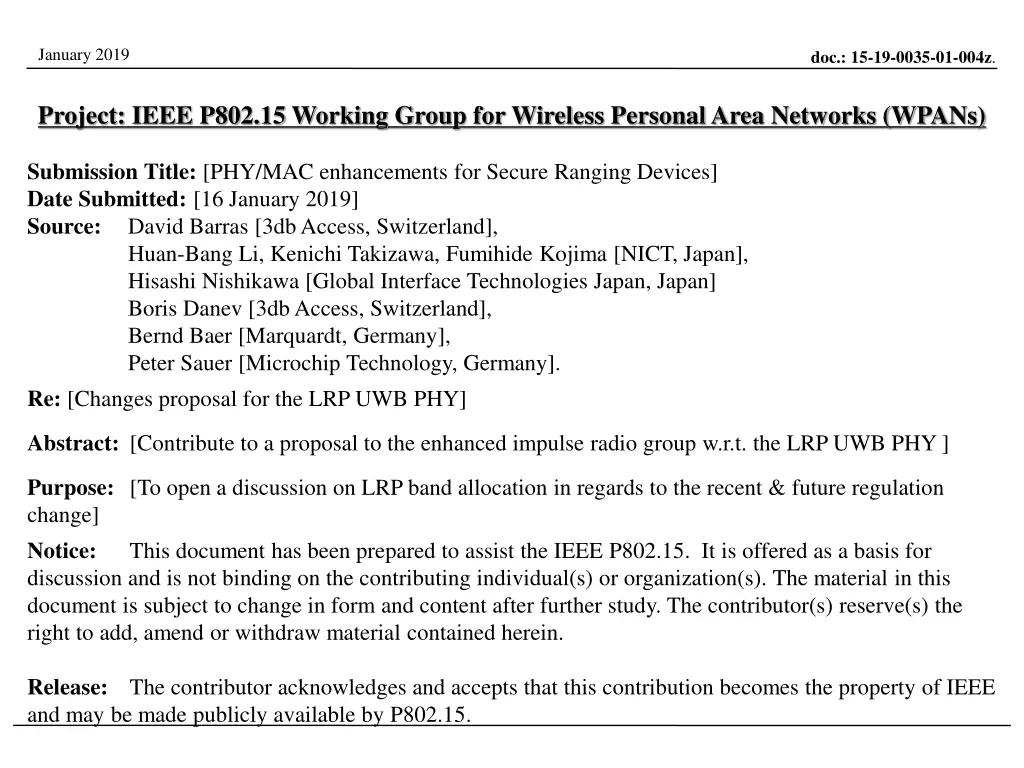
Enhanced Impulse Radio Group Proposal for LRP UWB PHY Band Allocation Discussion
Explore the proposal for enhancing PHY/MAC for secure ranging devices in the IEEE P802.15 Working Group. The document discusses changes in band allocation, channel frequencies, and bandwidth to align with recent and future regulations. It aims to foster interoperability and compliance with evolving standards regarding the LRP UWB PHY. Discover the frequency allocation for LRP SRDEV bands, considering worldwide regulations and specific regions like the USA, EU, China, and Japan.
Download Presentation

Please find below an Image/Link to download the presentation.
The content on the website is provided AS IS for your information and personal use only. It may not be sold, licensed, or shared on other websites without obtaining consent from the author. If you encounter any issues during the download, it is possible that the publisher has removed the file from their server.
You are allowed to download the files provided on this website for personal or commercial use, subject to the condition that they are used lawfully. All files are the property of their respective owners.
The content on the website is provided AS IS for your information and personal use only. It may not be sold, licensed, or shared on other websites without obtaining consent from the author.
E N D
Presentation Transcript
January 2019 doc.: 15-19-0035-01-004z. Project: IEEE P802.15 Working Group for Wireless Personal Area Networks (WPANs) Submission Title: [PHY/MAC enhancements for Secure Ranging Devices] Date Submitted: [16 January 2019] Source: David Barras [3db Access, Switzerland], Huan-Bang Li, Kenichi Takizawa, Fumihide Kojima [NICT, Japan], Hisashi Nishikawa [Global Interface Technologies Japan, Japan] Boris Danev [3db Access, Switzerland], Bernd Baer [Marquardt, Germany], Peter Sauer [Microchip Technology, Germany]. Re: [Changes proposal for the LRP UWB PHY] Abstract: [Contribute to a proposal to the enhanced impulse radio group w.r.t. the LRP UWB PHY ] Purpose: [To open a discussion on LRP band allocation in regards to the recent & future regulation change] Notice: This document has been prepared to assist the IEEE P802.15. It is offered as a basis for discussion and is not binding on the contributing individual(s) or organization(s). The material in this document is subject to change in form and content after further study. The contributor(s) reserve(s) the right to add, amend or withdraw material contained herein. Release: The contributor acknowledges and accepts that this contribution becomes the property of IEEE and may be made publicly available by P802.15.
January 2019 doc.: 15-19-0035-01-004z. Scope Open discussion on LRP band allocation Motivation Enhancing interoperability & fitting upcoming regulation changes
January 2019 doc.: 15-19-0035-01-004z. Channel frequencies and bandwidth Band allocation as per 802.15.4 2015 and 15-8-0432 Some of these bands are no longer optimally fitting recent regulations changes & proposals Channel number 0 1 2 3 Center Max. bandwidth [MHz] 1406.08 2146.56 1730.56 2146.56 frequency [MHz] 6489.6 6988.8 7987.2 8486.4 Does recent & future regulation changes force band allocation of 4z to adapt ?
January 2019 doc.: 15-19-0035-01-004z. LRP SRDEV Frequency Allocation (1/2) 4z is an opportunity to propose new LRP SRDEV bands to optimally cover and match worldwide regulations, while keeping the wideband channels as is 6 channel w/ BW>600 MHz, SRDEV band 2 same fc than LRP band 2 and HRP band 9 Channel separation: 652.8 MHz (= 17 38.4 MHz) Band allocation for LRP SRDEV 0 USA 15.250 -5 WiFi 6G mask Normalized levels [dBr] ETSI mask -10 Japan mask (outdoor) China mask -15 SRDEV 0 SRDEV 1 -20 SRDEV 2 SRDEV 3 -25 SRDEV 4 SRDEV 5 -30 5500 6000 6500 7000 7500 8000 Frequency [MHz] 8500 9000 9500 10000 10500 11000
January 2019 doc.: 15-19-0035-01-004z. LRP SRDEV Frequency Allocation (2/2) Worldwide compliance: SRDEV 0 starts at fL>6000 MHz and thus matches all UWB regulations SRDEV 0 covers optimally FCC 15.250 (but can be affected by 6 GHz RLAN) SRDEV 0 2 cover optimally EU regulation (outdoor automotive only) SRDEV 0 3 cover China regulation (outdoor) SRDEV 2 for Japan outdoor SRDEV bands: fc [MHz] BW [MHz]* USA ETSI China Japan 0 1 2 3 4 5 6681.6 620 7334.4 620 7987.2 620 8640 620 9292.8 620 9945.6 620 x (indoor) x (indoor) x (indoor) x (indoor) x (indoor) x (outdoor) x x x x (outdoor) x (outdoor) x (outdoor) x (outdoor) x (outdoor) * mask for channel not fully defined yet
January 2019 doc.: 15-19-0035-01-004z. Summary 1. LRP UWB already agreed to have a large bandwidth channel allocation in the motion-carried baseline. That feature must be kept for applications seeking channels with large bandwidth. Previous LRP wideband channels are kept. 2. In parallel to large bandwidth channel allocation, LRP UWB will develop a small bandwidth channel allocation, which may enhance SRDEV interoperability and compliance with recent and upcoming regulation changes. 3. The small bandwidth plan is as shown in slide 5 using channel separation of 652.8 MHz (= 17 * 38.4 MHz) and aligning center channel SRDEV2 to LRP2 & HRP9, the minimum bandwidth of 400 MHz is kept. 4. All proposed bands are defined as non-mandatory and their use by RDEV or SRDEV may depend on the region where they operate.
January 2019 doc.: 15-19-0035-01-004z. Q&A
January 2019 doc.: 15-19-0035-01-004z. APPENDIX LRP wideband channels Actual status (802.15.4 2015 ) and 15-18-0432 doc contribution Channel number 0 1 2 3 Center Max. bandwidth [MHz] 1406.08 2146.56 1730.56 2146.56 frequency [MHz] 6489.6 6988.8 7987.2 8486.4 <7587.84 -18 7587.84 to 7662.72 -10 7662.72 to 9809.28 0 3 8486.4 9809.28 to 9884.16 -10 > 9884.16 -18
January 2019 doc.: 15-19-0035-01-004z.
January 2019 doc.: 15-19-0035-01-004z.
January 2019 doc.: 15-19-0035-01-004z.
January 2019 doc.: 15-19-0035-01-004z.

